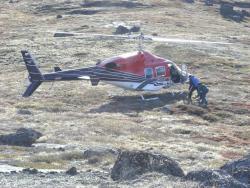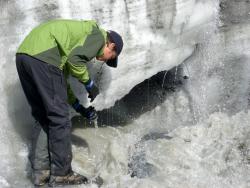Meltwater Tracing in the Greenland Ice Sheet
The Greenland Ice Sheet represents the largest expanse of glacial ice in the Northern hemisphere and is capable of contributing significant quantities of meltwater and associated carbon material to the surrounding North Atlantic and Arctic Oceans (IPCC, 2007). However, the potential impact of carbon cycle fluctuations in Greenland and other glaciated environments has been largely neglected in many climate change models. Under climatic warming, these environments may contribute a disproportionately large flux of water and sediment to their surroundings. Here, we propose a novel multi-disciplinary approach to examine the interdependence of water and carbon cycles through the Greenland Ice Sheet. The primary objectives of this study are to establish a baseline flux of carbon export from glaciated Arctic environments by (1) assessing the timing and routing of meltwater through a large glacial system and (2) characterizing the magnitude, age and biological reactivity of the supraglacial (on the glacier surface) and subglacial (beneath the ice mass) carbon pools. To date, such first order characterization has not been undertaken, yet is requisite information for determining present carbon cycling beneath glaciated areas and the associated impact on the ocean. By establishing present-day values of meltwater flow and the type of organic carbon present beneath glaciated areas, this study will serve as the needed foundation for broader investigations into the impact of increased meltwater runoff from Arctic glaciated environments to the surrounding marine environments.





